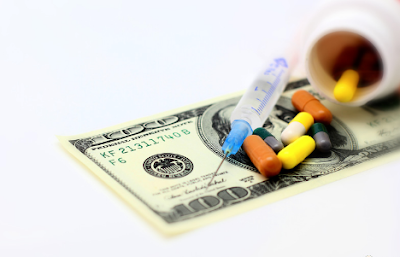Medicare Part D: 6 Things You Should Know about Prescription Coverage - Medicare Part D is sometimes hard to decipher. Here are some things to keep in mind when you sign up for it. Medicare's prescription drug program has helped millions of seniors enjoy significant savings. But when it comes to Part D, there can be more than meets the eye. In fact, there are lots of things you need to remember if you hope to keep your costs down. Here are the six most important ones.
1. Part D doesn't cover everything
Even though you pay a monthly premium, you still must pay for part of your prescription costs. These copayments can really add up, depending on how much medicine you take. If you aren't careful, you can easily end up spending more than you want. So even though Part D can be a big help, it's still important to budget and plan accordingly.
2. No two policies are the same
Part D is administered by private insurance companies, not by
Medicare itself. These companies offer a number of coverage plans that vary in costs and benefits. Of course, higher premiums get you better coverage. But Medicare requires that every policy cover at least two medications for every major health condition. That means you might be able to get the coverage you need with some cash to spare.
3. You can only join at certain times
It's best to sign up for Part D during your initial Medicare enrollment, at the same time you sign up for Parts A through C. This is the seven-month window that starts three months before you turn 65. It includes your birth month as well the three months that come after. If you decline Part D then, you'll have to wait for the next open enrollment. This runs every year from November 15 to December 31, with coverage starting on January 1.
4. Delaying could get you penalized
You're encouraged to enroll in Part D as soon as you're eligible. The penalty for waiting is a one-percent premium hike for every month you hold out. Go a year without joining and you might have to pay 12 percent more for coverage. There's an exception, though. As long as you have comparable drug coverage from another policy, you don't have to enroll. But it's a good idea to play it safe before passing up Part D. Take your policy to your local Social Security office and let someone review it.
5. There's a coverage gap
It's often called the doughnut hole, and it's very significant. Once you've spent the annual maximum amount, you lose coverage until the next calendar year rolls around. But there's an exception to this rule too. If you spend an additional $4,550 on medications, then you automatically get catastrophic coverage. This coverage is quite generous. Once you have it, it covers 95 percent of all prescription costs.
6. You might be able to get Extra Help
Extra Help is a financial assistance program for people on limited incomes. It can help you save a lot of money on premiums, copayments and deductibles. And depending on how much you qualify for, you might even be exempted from the doughnut hole. In that case, you wouldn't have a coverage gap. Depending on your financial situation, it might be worth your time to apply, even if you think you won't qualify. If you're interested, drop in at your local Social Security office. Someone there can help you with the paperwork and get you started.
SOURCES:
- Barry P. Medicare prescription drug coverage: Your questions answered. AARP Bulletin Today. November 10, 2009. Accessed: 02/19/2010
- Henry J. Kaiser Family Foundation. Medicare Part D spotlight: Part D plan availability in 2010 and key changes since 2006. Accessed: 02/19/2010
- U.S. Department of Health and Human Services. Medicare prescription drug coverage. 2009. Accessed: 02/19/2010
